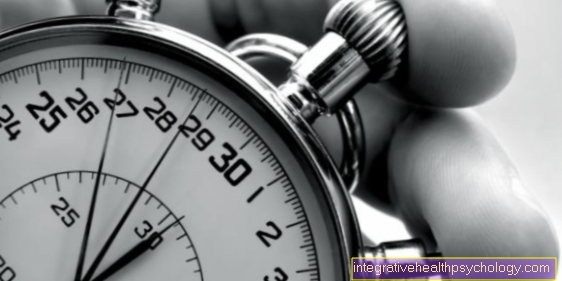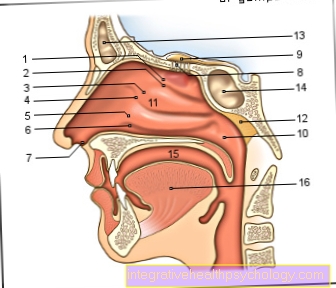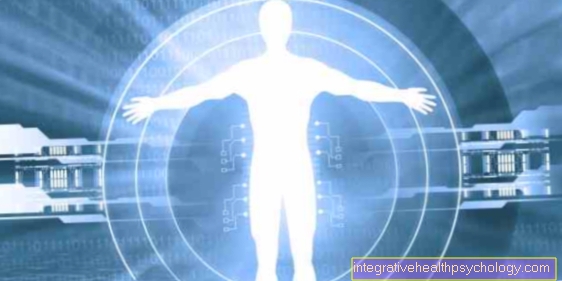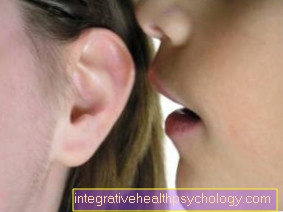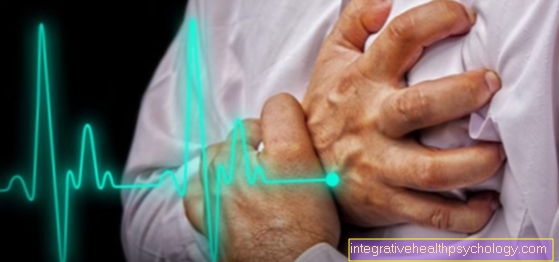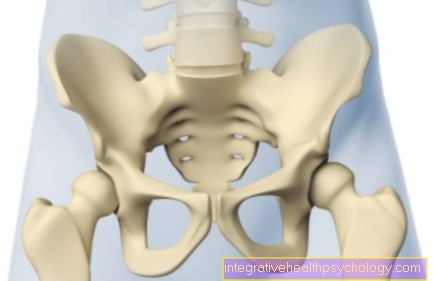Iron deficiency anemia
What is Iron Deficiency Anemia?
The definition of anemia (anemia) consists of a decreased amount of red blood cells (Erythrocytes) and / or a small amount of the red blood pigment (hemoglobin). If the anemia is caused by iron deficiency, not enough red blood pigment is produced, so that the erythrocytes are particularly small and do not contain a lot of hemoglobin. One speaks therefore of a microcytic (small cells), hypochromic (little hemoglobin) anemia.
Read more on the subject at: Anemia

causes
There are many causes of iron deficiency anemia. If the amount of iron in food is too low, it can lead to a reduced absorption of iron. It often affects people who have an unbalanced diet or who eat no animal products or meat, as meat is the best source of iron for humans.
Read more on the subject at: Foods with iron
But diseases of the gastrointestinal tract can also result in reduced iron absorption and thus cause anemia due to iron deficiency. Iron is required in the body for the formation of hemoglobin. If enough hemoglobin cannot be formed due to the low iron level, this value in the blood drops and anemia develops. In addition, due to the reduced hemoglobin, only a few erythrocytes can be formed, so that there is also a shortage of red blood cells.
Read more on the subject at: Causes of Iron Deficiency
Diagnosis / laboratory values
In order to determine anemia, an anamnesis should first be taken, in which typical symptoms of anemia can be recognized. The physical examination usually reveals paleness, and torn corners of the mouth can also be noticed.
The most important diagnostic step in anemia due to iron deficiency consists in determining the laboratory values. A reduced concentration of hemoglobin and erythrocytes can be found in the blood. Usually the less meaningful serum iron is also determined. In contrast, the determination of the iron transporter from the gastrointestinal tract into the blood and the iron transport in the blood play an important role in differentiating the causes of iron deficiency from other possible triggers. For this, the transferrin, the transferrin saturation and the ferritin are determined.
Read more about the topic at: Iron deficiency test
Reticulocytes
Reticulocytes are precursor cells of the erythrocytes. The reticulocytes are formed in the bone marrow, where they mature into finished red blood cells and then enter the blood. If there is anemia due to an iron deficiency, there is a lower concentration of erythrocytes in the blood. The body tries to compensate for this by creating many new cells. Due to the lack of red blood cells, the body begins to release precursors such as reticulocytes into the blood. An increased reticulocyte count in the blood therefore indicates increased blood formation.
Read more on the subject at: Reticulocytes
I recognize anemia from iron deficiency by these symptoms
The typical symptoms of anemia due to iron deficiency are mostly non-specific. Iron deficiency anemia manifests itself in poor performance, tiredness, difficulty concentrating and increased headaches. In addition, the skin and mucous membranes (in the mouth, conjunctiva around the eyes) may become very pale. A sharp increase in heart rate during exercise is also not uncommon in anemia. In the case of anemia due to iron deficiency, damage to the skin (angular cheekbones) and the mucous membrane (aphthae) also occurs. In addition, nails and hair become brittle. It is not uncommon for iron deficiency anemia to lead to sleep disorders.
Read more on the subject at: Symptoms of anemia
eye bags
Dark circles usually appear as dark half to third circles under the eyes. Typically they occur when there is a lack of sleep (especially chronic). Iron deficiency can also be the cause of dark circles. The cause of the dark circles lies mainly in a greater transparency of the skin and the connective tissue that lie at the point of the dark circles. The dark color of the vessels below can shine through the skin particularly well, making the dark circles look dark.
Read more on the subject at: Causes of Dark Circles
Torn corners of the mouth
Torn corners of the mouth (Angular rhinitis) are typical symptoms that occur specifically in iron deficiency anemia (i.e. no other form of anemia). The corners of the mouth tear where the upper and lower lips meet. Typically, angular cheilitis is painful, so eating in particular, but also speaking, can be affected by pain. In the case of anemia due to iron deficiency, the skin and mucous membrane are so disturbed that the torn corners of the mouth can easily develop. Infections or particularly dry skin can also cause the angular infections.
Read more on the subject at: Torn corners of the mouth
treatment
Iron deficiency anemia should primarily address the cause of the iron deficiency. For example, treating a chronic source of bleeding (often located in the intestine) can be an important part of the therapy. It is important to clarify a cause of the iron deficiency before balancing the iron balance. A change in diet to foods containing more iron (meat, animal products, beans, peas, legumes, etc.) can also remedy the cause of the iron deficiency.
In the case of a certain iron deficiency, iron can also be given in the form of tablets or drops. This type of treatment should be given in severe iron deficiency anemia. The iron should be taken as far away as possible from meals so that as much of the iron as possible is absorbed in the intestine. Iron is taken until the hemoglobin levels have stabilized, after which the therapy should be continued for another three to six months. After this time, the iron stores are replenished. If the iron supplements are not tolerated or if there are chronic diseases that cause the iron deficiency, the iron can also be given directly into the vein.
Read more on the subject at: This is how you fix an iron deficiency
Duration and forecast
Anemia due to iron deficiency is usually a disease that lasts longer. By the time the iron deficiency is so pronounced that it is noticeable by clinical signs, the iron stores are usually already exhausted, so it takes several months for the iron balance to regenerate. However, the disease can be treated very well by taking iron without causing any consequential damage. If care is taken to ensure that iron is adequately absorbed after treatment, it can prevent it from occurring again. However, it is not uncommon for those affected to repeatedly suffer from anemia due to iron deficiency. Consequential damage can only occur with chronic iron deficiency anemia.
Course of disease
The anemia caused by an iron deficiency is hardly noticeable at first, as its onset is very insidious. Gradually, there are more difficulties concentrating and headaches. Fatigue and exhaustion as well as reduced performance also occur. Later mucous membrane defects such as aphthae in the mouth and angular rhinitis appear. Hair and nails also only become brittle after a long period of anemia.
What are the chronic consequences of iron deficiency anemia?
Chronic anemia caused by iron deficiency can cause serious physical complaints. Initially, the heart and lungs are negatively affected, as they have to work harder to supply the body with sufficient oxygen. The result can be pain and pressure on the chest up to a heart attack, which is caused by a lack of oxygen in the heart muscle cells. The brain is also a very sensitive organ and reacts quickly to a chronic lack of oxygen, which is why there are initially difficulty concentrating, and later brain cells also die.
Read more on the subject at: Consequences of anemia


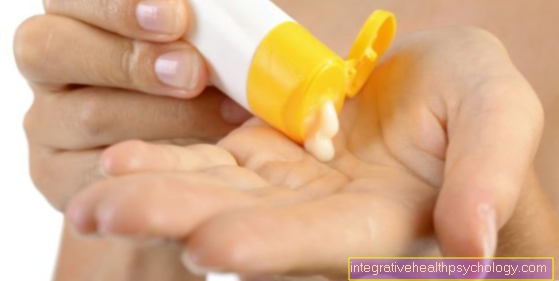


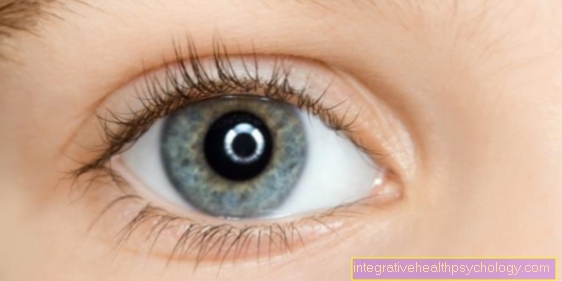


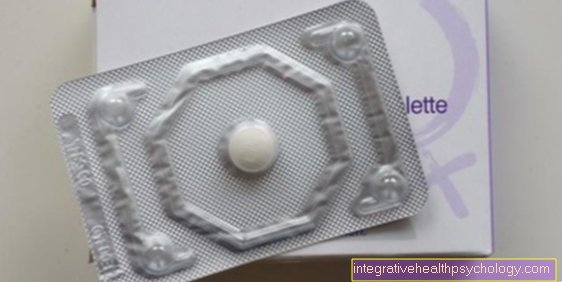
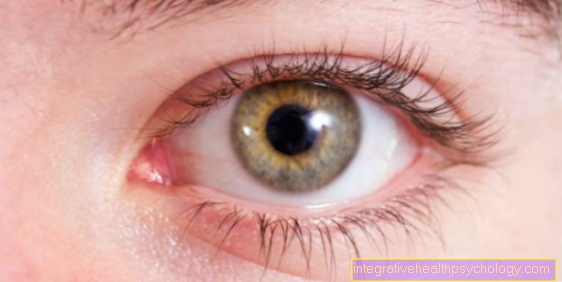
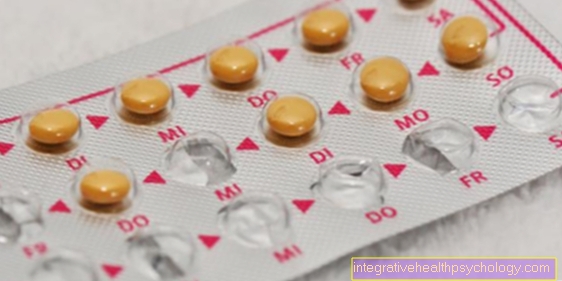

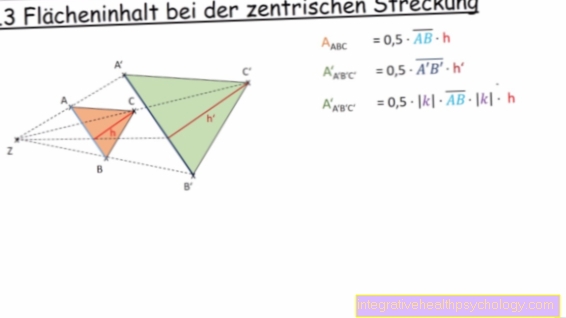

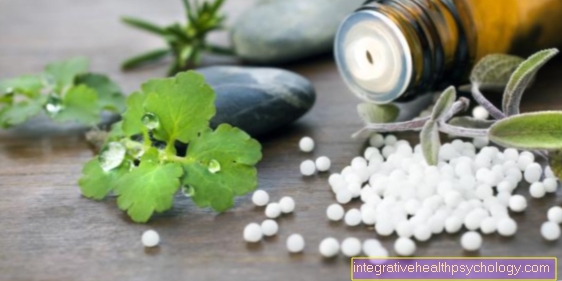


.jpg)




